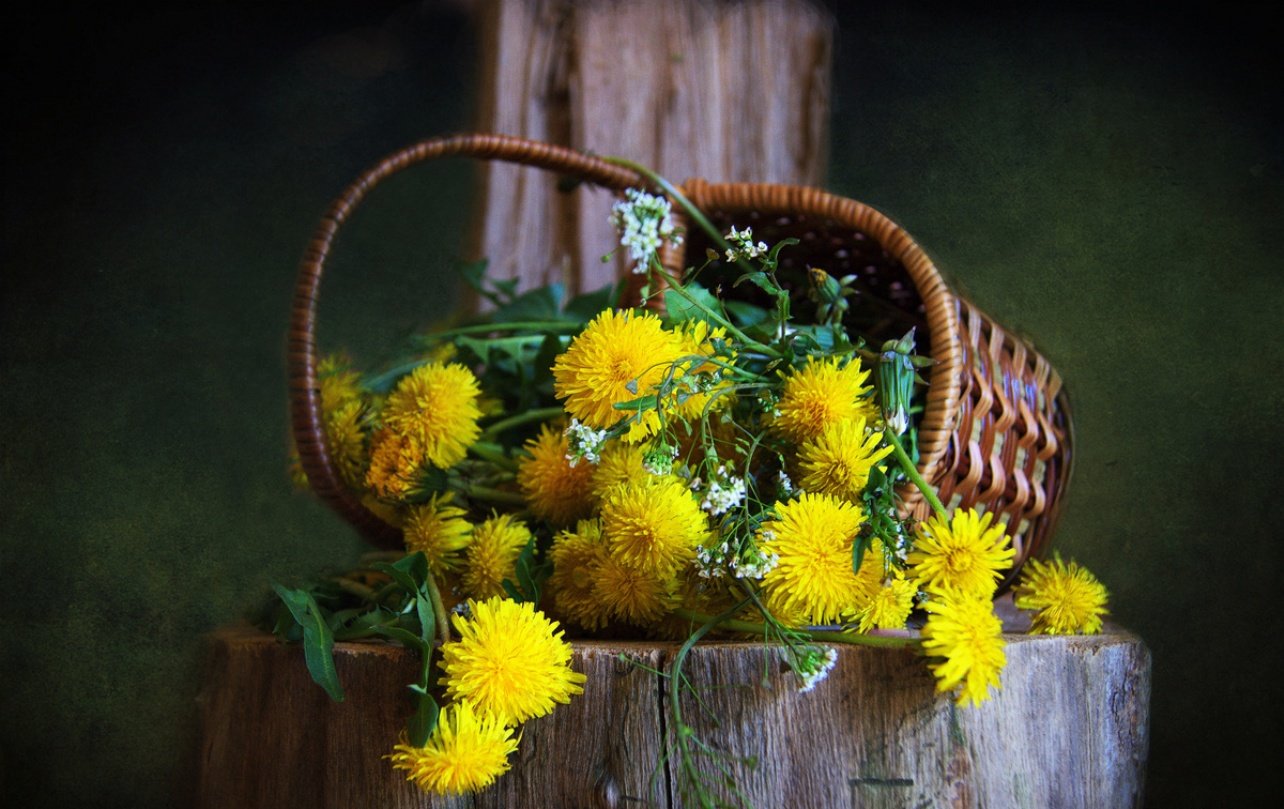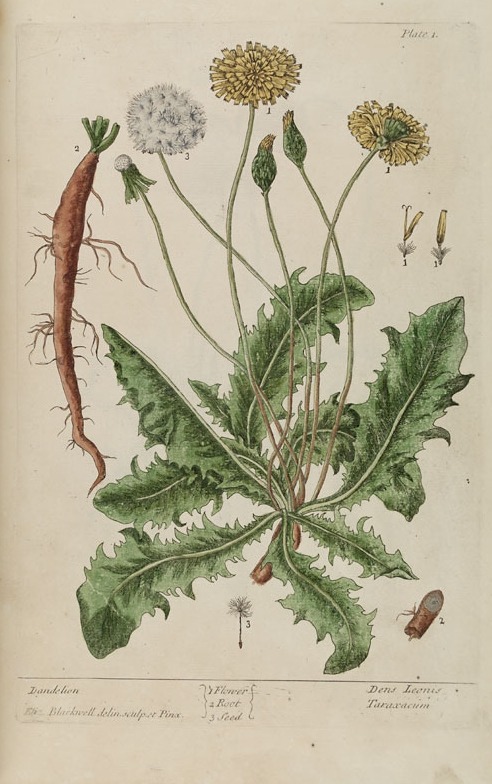The humble Dandelion:

Every part of the dandelion is edible–the leaves are a bitter green and the yellow flowers can be used in teas. Like many bitters, the plant has a mild diuretic effect (in fact, one of the folk names for dandelion is “piss-a-bed” which… how can you not love that?). This is supposedly good for your liver and digestion. Dandelions have been used in herbal remedies all around the world and across time, from Chinese traditional medicine to the indigenous nations of the Americas.
Dandelions are actually a taproot plant like carrots, meaning they have one big main root with several smaller ones reaching out of it. Their roots are notorious for growing really deep into the soil if left unbothered, and can be used as companion plants in gardening to help funnel nutrients up into the top layers of soil for surrounding plants. The roots too are edible with, again, a bitter taste.
How to Harvest Dandelion Root:
- Firstly, it’s not advisable to just eat any old dandelion you find. They often grow in places that have been treated with pesticides, which you don’t want to eat.
- Once a reputable dandelion is found or planted, timing is everything. It’s best to let the plant grow for a couple of years, and to harvest the root in the fall.
- In the fall the dandelions typically won’t have their signature yellow flower any more, so be absolutely sure that what you’re harvesting is actually a dandelion!
- Depending on how soft the surrounding soil is, you can use your hands to dig up the root or a gardening fork. Ideally, you don’t want to break the root, so try jimmying around the plant to loosen the soil before going in.
Preparing the Roots:
- Wash the dirt off!
- The roots can be eaten raw in salads, but typically they are dried. First take off the stringy excess roots. Then cut the taproot in half longwise and chop those pieces into shorter wedges, about ¼ to ½ inch or smaller.
- To dry, you can use a dehydrator or you can dry them out in a cool, dry spot over a couple of weeks. You can then use the dried roots for whatever witchy applications you desire, such as powdering them or using them in spells.
- The dried roots will keep for about a year.
Dandelion Root Tea & Coffee
- Once dried, the roots are tastier if you roast them. A lower heat for a longer amount of time is best, such as 250 degrees (F) for 2 hours.
- After the roots are roasted, grind them into smaller bits in a coffee grinder or with a mortar and pestle. If you store the roots in a jar and grind handfuls of them right before making them into coffee or tea, this makes the taste slightly stronger.
- You can use the ground roots as you would coffee grounds to brew dandelion root coffee!
- Alternatively, you can make a decoction tea, similar to how you’d make ginger tea. In a saucepan, combine a cup of water for every serving you’d like to make + 1 tsp of ground root for every cup. Lightly simmer for about 10 minutes. Afterwards, drain the tea and it’s ready to drink.
- The taste is earthy and a little bitter, so feel free to experiment with sweeter elements such as cinnamon sticks or mixing with other teas.

Possible Correspondences:
- Along with resilience, dandelions personally remind me of joy and luck. The association with granting wishes in their seed head form can also be borrowed for spells.
- The English word “dandelion” is a bastardization of the French “dent de lion” meaning “lion’s teeth.” Dandelions can therefore be associated with Leo.
- Roots in general, due to their nature, can be grounding or can bear some connection to the underworld.
Source: Tadpoling (deactivated?)
